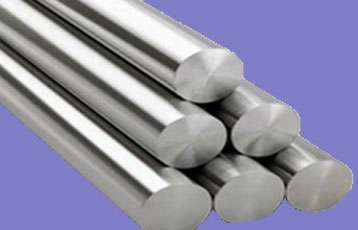Stainless steel is known for its corrosion resistance and durability, making it a popular choice in various industries. 446 stainless steel, in particular, is a ferritic stainless steel with excellent high-temperature properties, making it suitable for applications in extreme heat environments such as furnace components, boiler flues, and exhaust systems. However, welding 446 stainless steel requires specific techniques to maintain its properties and ensure a strong, corrosion-resistant weld. In this blog, we’ll explore some of the best practices and tips for welding 446 stainless steel.
Tips for welding 446 stainless steel
- Proper Safety Precautions: Before you start welding, always prioritize safety. Wear appropriate personal protective equipment, including a welding helmet with a shade suitable for the welding process, gloves, and flame-resistant clothing. Ensure you work in a well-ventilated area to minimize exposure to fumes and gases generated during welding.
- Choose the Right Welding Process: 446 stainless steel can be welded using various processes, such as gas tungsten arc welding (GTAW), gas metal arc welding (GMAW), and shielded metal arc welding (SMAW). The choice of process depends on the specific requirements of your application. GTAW, commonly known as TIG welding, is preferred for its precise control and clean welds, making it suitable for thin materials and critical applications.
- Select the Appropriate Filler Material: The right filler material is crucial for welding 446 stainless steel. Type 446 is often used as a filler metal due to its similar composition. However, you can also use stainless steel filler metals like AWS E309 or E310. The filler material should match the base metal’s composition to maintain the material’s corrosion resistance.
- Preheat and Post-Weld Heat Treatment: 446 stainless steel is prone to cracking if not properly preheated and post-weld heat treated. Preheat the material to a temperature between 400-600°C (752-1112°F) before welding to reduce the risk of cracking. After welding, perform a post-weld heat treatment to relieve stress and improve the material’s mechanical properties. The post-weld heat treatment temperature should be around 600-760°C (1112-1400°F).
- Maintain Proper Interpass Temperature: While welding, it’s essential to monitor and control the interpass temperature. Keep it within the specified range, usually 150-260°C (300-500°F), to prevent cracking and maintain the material’s properties.
- Control Welding Speed and Travel Angle: Control your welding speed and travel angle to ensure a consistent and sound weld. Avoid excessive heat input, leading to distortion and reduced corrosion resistance. A travel angle of 10-15 degrees from vertical is typically recommended.
- Back Purging: In some cases, using a back purging technique can help improve the quality of the weld by protecting the backside from oxidation. This is particularly important for applications where corrosion resistance is critical.
- Post-Weld Cleaning and Passivation: After welding, thoroughly clean the welded area to remove any contaminants and oxides. Passivation, which involves treating the surface with an acid solution, can help restore the material’s corrosion resistance.
In conclusion,
welding 446 stainless steel requires careful consideration of the material’s unique properties and proper welding techniques. By following these best practices and tips, you can ensure that your welds are strong, corrosion-resistant, and suitable for high-temperature applications. Always consult the material’s manufacturer specifications and seek advice from experienced welders for specific project requirements.

As the editor of the blog, She curate insightful content that sparks curiosity and fosters learning. With a passion for storytelling and a keen eye for detail, she strive to bring diverse perspectives and engaging narratives to readers, ensuring every piece informs, inspires, and enriches.










